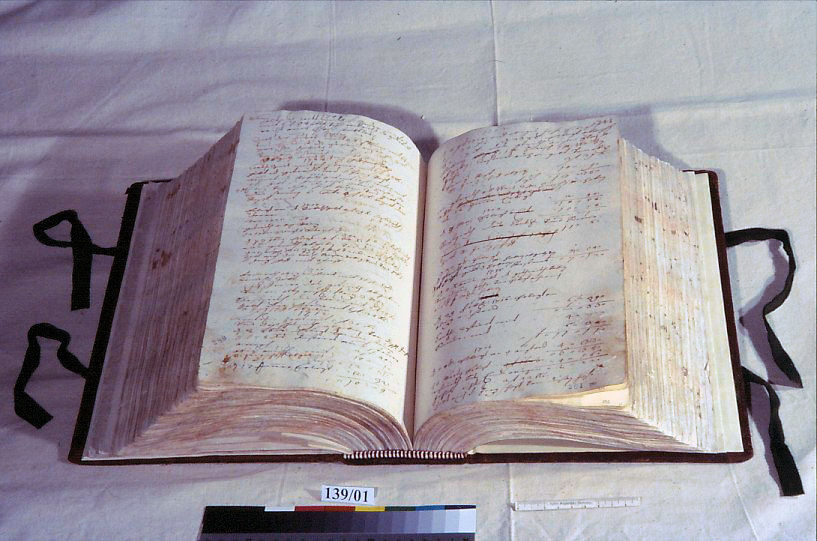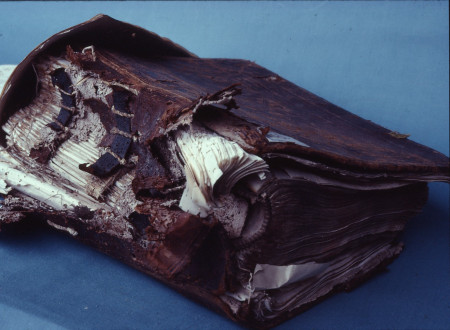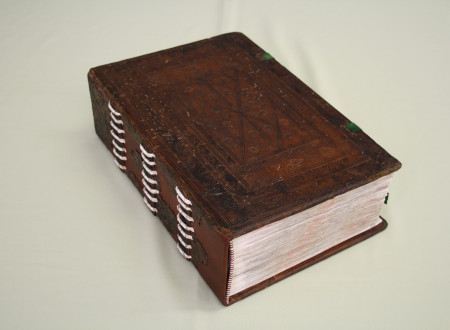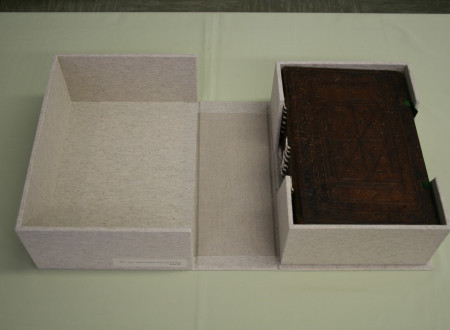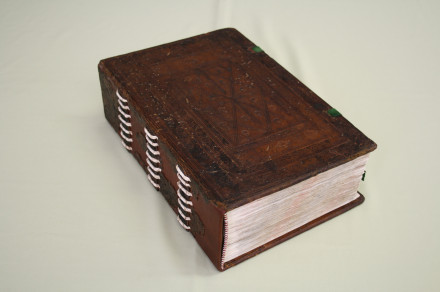The Rent-Roll for the Seigniory of Brdo pri Kranju (Egkh) and for the Estates of Naklo (Naclas) and Primskovo (Primskau)
The rent-roll (Handurbar) for the seigniory of Brdo pri Kranju and for the estates of Naklo and Primskovo from the period 1705–1718 is one of the 21 rent-rolls currently kept by the Archives of the Republic of Slovenia (RS), which were compiled between ca. 1520 and 1782 for the core or the individual parts of these estates. Heading the line of landlords of Brdo – originally only a minor estate – was Jurij Egkh. Born in 1462 as the eldest son of Henrik and Marjeta, born Hungerspach (Ungrispach), the future investor in this splendid Renaissance mansion, which today is Slovenia's main protocol venue, purchased on July 30, 1500 from King Maximilian I the nearby estate of Novi grad nad Preddvorom (Neuburg), and in 1513 merged it with the newly acquired Turn pod Novim gradom (Thurn unter Neuburg) estate. According to contemporary sources of the time, by the mid-1490s the ambitious Jurij had become the steward of the sovereign princely estate of Naklo. In 1510, having granted a loan of 3000 Rheinish Gulden to the sovereign prince, he received in return the estate of Naklo as well as that of the neighbouring Primskovo. As Vizedom of Carniola between 1498 and 1514, and after 1511 also as Governer (Hauptmann) of Gorizia, he skilfully spread and merged the acquired land in this part of Gorenjska, which after his death in 1537 was divided among his sons. The rent-roll from the first half of the 1550s places Naklo and Primskovo estates among the property of Franc Jožef Baron of Egkh–Hungerspach, whereas the one compiled a few years later, after the death of Franc Jožef, includes both estates among the property of »the most famous among the Brdo Barons«, Jurij's second son Janez Jožef. The joint administration of Brdo, Naklo and Primskovo estates leading to the inclusion of the formerly independent (sovereign princely) estates into the Brdo seigniory is mirrored in the title of the here presented rent-roll.
When researching the content of the rent-roll, we can make good use of its index, which, in addition to listing the names of the villages included, offers also an insight into some of the other sources of income of the Brdo landlords. The index contains the names of the places located in the area between Goriče in the North, Prebačevo in the South, (Lower) Besnica in the West and the Kokra river and Nasovče in the East. The serfs in this area were required not only to pay duties in kind and in cash to their landlords, but to pay taxes to the state as well, the most burdensome among the latter being the so-called contribution. Another source of income for the Brdo estate was the rent for the mill in Predoslje and the Vogtei (advocate fee) in Srednja vas near Goriče, in Tupaliče, Hotemaže and Visoko. The landlords of Brdo were likewise to receive a yearly payment of either one Star (about 106 litres) or two bushels (about 55 litres) of oats and one hen from the caretakers of the church of St. Urh (Ulrich) in Hotemaže, from Andrej Koštrun (Kostrun) in Zgornja Bela near Preddvor, and from Jurij Nunner by the Kokrica river (an der Kokhriz) or their successors. Each year, the subjects in Kokra (in der Kankhler), except for their mayor, were to give their landlord 35 (larger) logs of firewood from each farm (Hube). Tithe paid in cash was also collected; the rent-roll states the names of tithe payers and the amounts they had to pay. Since the rent-roll was intended primarily to keep records on the duties actually paid, the yearly recordings reveal if and how much an individual serf owed his seigniory or the state. Unfortunately, the first 20 leaves are missing; thus, the information about the serfs in Visoko, Duplje, Trstenik, Srakovlje, Peryach, Kokrica, Orehovlje, and Predoslje is partially or completely lost. And here we encounter a story of the book having been damaged so severely by bookworm and other causes that it was rendered almost unusable. About a decade ago the book was eventually submitted for restoration treatment to the Book and Paper Conservation Centre of the Archives of RS, which celebrated its 60th anniversary last year.
For quite some time the book had been exposed to book-feeding insects, which fed on the book's organic materials, undisturbedly eating paper, leather, parchment and animal glue. Every single one of the book's structural elements – its paper quires, bands made of leather, parchment and paper, cardboard support, leather covers, and sewn endbands – was riddled with a number of tiny holes and loosened. The spine of the text block was so severely damaged that the binding collapsed and the bands, which normally help us reconstruct the original binding, were preserved only fragmentary. Still, the quality of the paper and of the writing was sufficient for paper conservators to use leaf-casting machine by means of which thousands of one-to-two millimetre holes were filled with paper fibres. Using such technique, the conservators managed to obtain homogeneous sheets of paper, which were strengthened with a coat of starch and methyl cellulose. The pioneer work, however, was the saving of the thick cardboard supports riddled with holes. Each of the supports was divided into three layers, creating a thickness suitable for treatment with the leaf-casting machine. All the layers were then sized with the same coat as was used for the paper, dried and glued with starch into cardboard. The restored board supports were used in the reconstruction of the binding.
The main elements of the binding were three flat bands of various materials, onto which 46 paper quires, consisting of a different number of sheets, were sewn. The bands called for a completely flat spine, strengthened by flaxen linen. The top and bottom edges of the spine were protected by two colour endbands, hand sewn onto a linen strip. The whole board was supported by cardboard and covered in brown goat leather tanned by tannin. Special feature in this reconstructed binding is the connection of the spine and the text block. Each band is fastened to the spine seven times by means of twisted alum-thawed tapes made of pig skin. Such bindings belong to the so-called long stich bindings, some of which can be found in archives as well as in libraries, although the example presented here has so far only been found in archives.
Completed in 2007, the restoration-conservation treatment proved to be a considerable challenge. A custom-made protective box was prepared for the book in order to preserve it properly for future generations. Such boxes actually provide protection for all the books kept in the Collection of Rent-Rolls (Urbaria). The whole collection is also available online.
Blanka Avguštin Florjanovič, Lilijana Žnidaršič Golec


